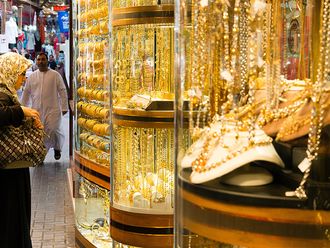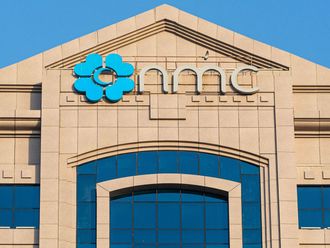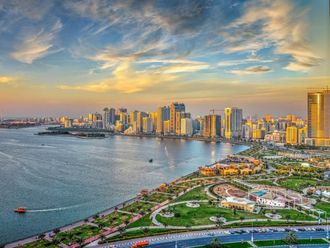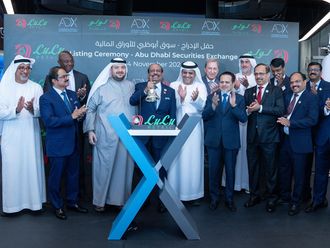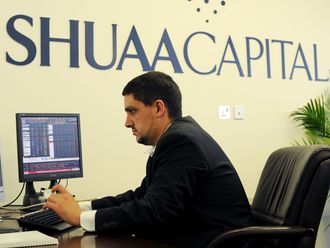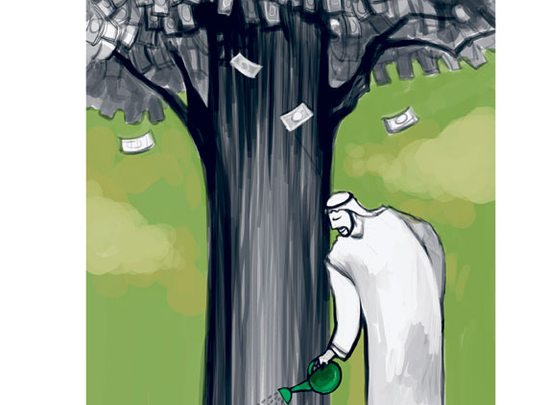
It took Islamic finance 40 years to reach the magical $1 trillion (Dh3.67 trillion) benchmark, and this niche market is on the march towards the next milestone of $2 trillion within the next five years — with Moody's predicting $5 trillion.
Considering the fact that it took almost 20 years for the conventional industry to reach the $1 trillion mark, but only ten to reach $6 trillion, it is highly likely that Islamic finance will reach that level within the next five to six years, subject to the clearance of certain bottlenecks.
The industry understand various bottlenecks, yet very little has been said about an "open bottleneck," connecting Sovereign Wealth Funds (SWFs), commonly found in the six GCC countries, with Islamic finance, also commonly used in the GCC countries.
SWFs may have exposure to Shariah-compliant investments, but not by design, as the universe of compliant opportunities is alleged to be smaller, with an inability to utilise derivatives to mitigate risks or borrow/short to enhance returns.
Approximately 16 of the 57 Muslim countries (members of the Organisation of the Islamic Conference, (OIC) have sovereign wealth funds (SWFs), the largest, ADIA of Abu Dhabi, estimated as having in excess of $600 billion. They imply recognition by the sovereign formally to save for future generations from oil and gas revenues, and it is interesting to note that ten of the sixteen 16 OIC SWFs have been operating for about ten years or less.
Need of the hour
However, the $1 trillion Islamic finance industry does not yet have a champion in a dedicated Islamic SWF, and it is the strategic need of the hour for not only figuratively supporting and raising the profile of Islamic finance, but also incubating and building Islamic asset classes and modalities of investment vehicles.
There have been serious discussions about establishing an Islamic "mega-bank" by one of the early pioneers of Islamic banking and an Islamic "Goldman Sachs".
In the post-subprime-induced credit crisis, an Islamic SWF might have more of a global reach, cross-sell potential and impact than a local or, at best, regional Islamic mega-bank with bias towards the real estate industry and its chain of borrowers. An Islamic mega-bank would still not directly address the needs of the "non-bankable" Muslims, which is probably 90 to 95 per cent of the 1.6 billion Muslims in the world.
Finally, there have been high-level discussions out of Southeast Asia about a Global Zakat Fund, as Zakat contributions amount to tens of billions of dollars per annum. However, there are pending Shariah issues on investing charity tax for the poor and impoverished in activities that could be seen as profit-generating investments. In contrast, the concept of a global (Islamic) fund modelled and labelled as an Islamic SWF (actually a "fund of funds") has arrived for serious consideration.
While an SWF has been traditionally been utilised for the benefit of the home country's future generations, an Islamic SWF would not be confined to borders, since the mandate is for all 1.6 billion Muslims and others interested in Shariah-compliant/based investing. It would be the equivalent of a global Islamic pension fund.
The board of directors/trustees should be a combination of globally-experienced regulators, bankers, fund managers, index and data providers, academics, scholars, central bank governors championing Islamic finance (like Governor Zeti Akhtar Aziz of Malaysia), and chaired by political leaders, like His Highness Shaikh Mohammad Bin Rashid Al Maktoum, Vice-President and Prime Minister of the UAE and Ruler of Dubai who have provided important political support to the cause of Islamic finance.
Within one or two years of operational experience, the Islamic SWF should be promoted and made legally available for investing in by any and every interested Muslim/non-Muslim "man on the street." As an added incentive, the fund would match it by a one-time 25 per cent contribution to encourage longer-term investing for patient investors.
Opportunity
An Islamic SWF is about enfranchisement and inclusion of the "lost, least and the last," of the 1.6 billion Muslims.
The culture of ‘buy-and-hold' patience, consistent with many SWFs, does not exist in Islamic investing. Thus it is an ideal opportunity for the Islamic SWF to build upon the focus on passive investment vehicles from the mere six per cent today. More than anything else, an Islamic SWF should be considered a strategic imperative for the OIC countries, led by a GCC country and Malaysia.
Islamic finance is no longer — having reached the $1 trillion mark an uncertain experiment. The next milestone, be it $2 trillion or $5 trillion, should include a borderless benchmark-sized Islamic SWF, promoting multiple assets, passive investing, a growing takaful industry, and introducing governance.
Most importantly, is there the political will to enfranchise the Muslims that Islamic finance has missed, not by an Islamic mega-bank or Islamic version of Goldman Sachs, but by way of an Islamic SWF?
The writer is Head of Islamic Finance, Thomson Reuters. A longer version of the article will appear in the forthcoming GN Quarterly Financial Review to be published on May 24. You can view it online at www.gulfnews.com






